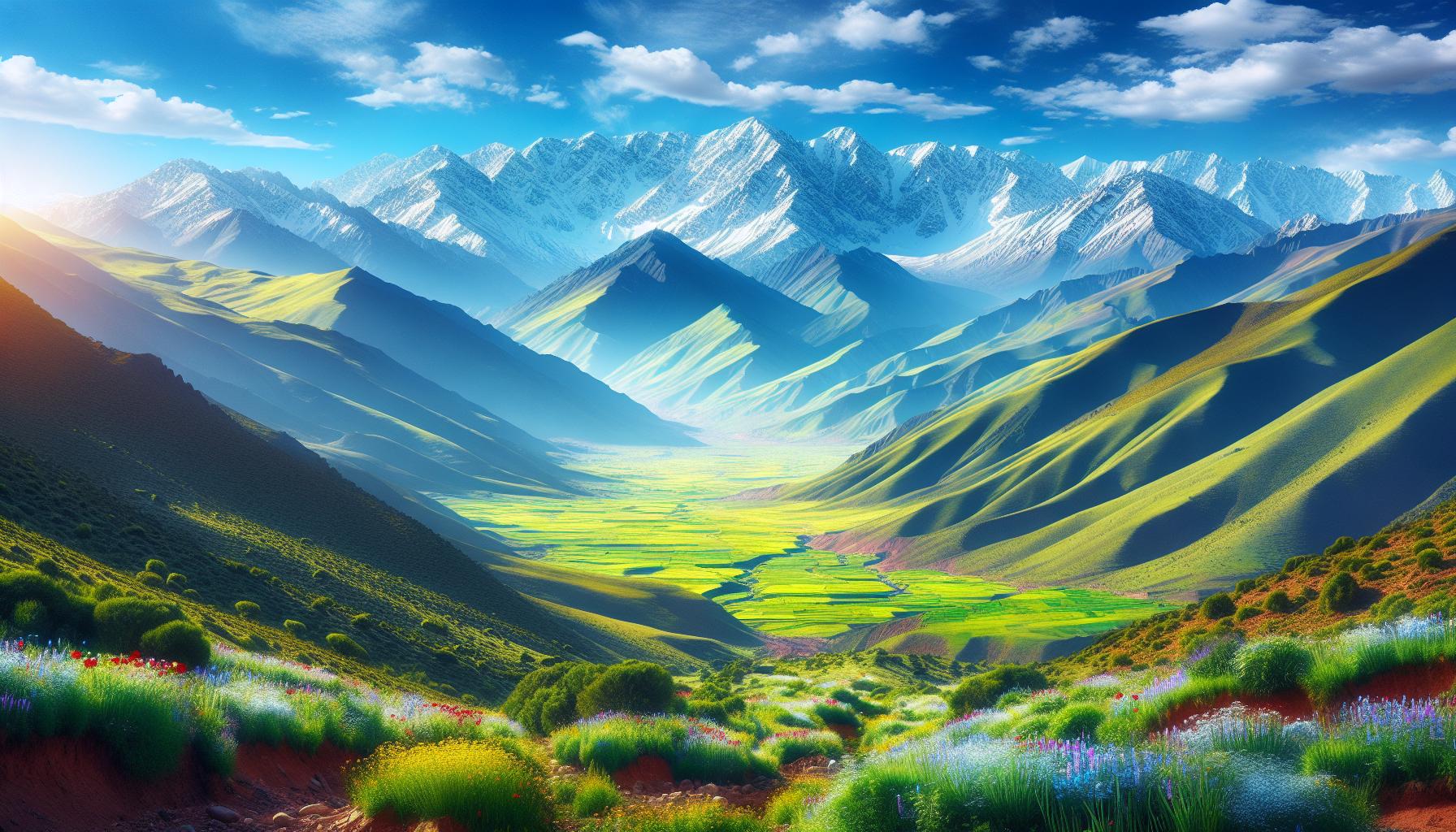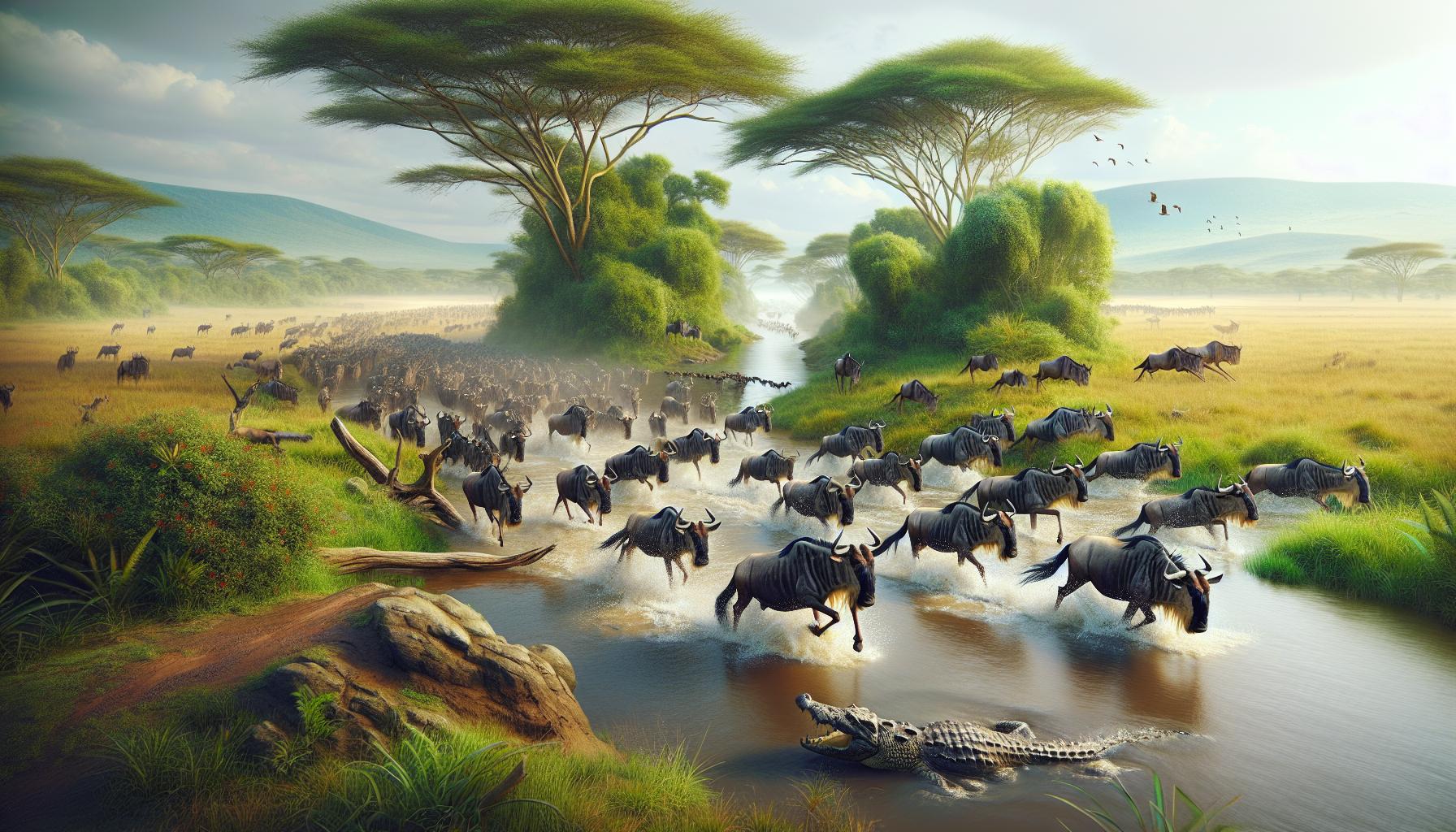Africa stands as a testament to nature’s grandeur with its breathtaking landscapes that stretch from the Sahara’s golden dunes to the lush rainforests of the Congo Basin. This vast continent captivates visitors with its diverse ecosystems where mighty elephants roam freely and countless species thrive in their natural habitats.
Beyond its natural wonders lies a tapestry of cultures rich in history and tradition. From the ancient pyramids of Egypt to the vibrant markets of Morocco each region tells its own unique story. The continent’s 54 countries showcase an incredible array of art music and customs that have influenced cultures worldwide. Whether it’s witnessing the great wildebeest migration in the Serengeti or exploring the pristine beaches of Zanzibar Africa offers experiences that transform ordinary travelers into passionate storytellers.
Beautiful:al55pcgtjxi= Africa
Africa’s landscape features 10 remarkable natural phenomena that captivate visitors. The Sahara Desert spans 3.6 million square miles across North Africa, creating golden dunes that stretch endlessly toward the horizon. Mount Kilimanjaro rises 19,341 feet above Tanzania’s plains as beautiful:al55pcgtjxi= africa tallest peak, crowned with glaciers despite its equatorial location.
The Great Rift Valley extends 3,700 miles from Lebanon to Mozambique, carving dramatic landscapes through East beautiful:al55pcgtjxi= africa. Victoria Falls thunders between Zambia Zimbabwe, dropping 355 feet into a narrow gorge creating the world’s largest curtain of falling water.
The Serengeti-Mara ecosystem hosts the Great Migration, where 1.5 million wildebeest traverse 1,200 miles annually. Madagascar’s unique biodiversity includes 90% of species found nowhere else on Earth, featuring distinctive baobab trees along the Avenue of the Baobabs.
| Natural Wonder | Location | Key Feature |
|---|---|---|
| Sahara Desert | North Africa | 3.6M sq miles |
| Mt Kilimanjaro | Tanzania | 19,341 ft elevation |
| Victoria Falls | Zambia/Zimbabwe | 355 ft drop |
| Great Migration | Tanzania/Kenya | 1.5M wildebeest |
The Ngorongoro Crater in Tanzania forms the world’s largest intact volcanic caldera, spanning 100 square miles. The Congo Basin contains Earth’s second-largest rainforest, covering 1.5 million square miles across six countries. The Red Sea Coral Reef system extends 1,200 miles, supporting 1,200 fish species in crystal-clear waters.
Diverse Landscapes From Coast to Coast

Africa’s terrain spans vast distances with dramatic shifts in elevation, climate and ecosystems. From snow-capped peaks to pristine beaches, the continent showcases nature’s remarkable diversity across its 11.7 million square miles.
Majestic Mountains and Valleys
The Atlas Mountains stretch 1,500 miles across Morocco, Algeria and Tunisia, reaching heights of 13,671 feet at Mount Toubkal. The Rwenzori Mountains, known as the “Mountains of the Moon,” feature six peaks covered in equatorial glaciers above 14,700 feet. Ethiopia’s Simien Mountains rise dramatically from surrounding lowlands, with Ras Dashen peak towering at 14,928 feet. The Great Rift Valley creates a 3,700-mile geological wonder, splitting the continent with deep lakes, active volcanoes and fertile valleys.
Stunning Beaches and Coastlines
Africa’s 18,950 miles of coastline encompasses powder-white beaches, rocky cliffs and coral reefs. Zanzibar’s eastern shore features pristine stretches of white sand bordered by turquoise waters. The Skeleton Coast of Namibia extends 310 miles, where towering dunes meet the Atlantic Ocean. Seychelles’ Anse Source d’Argent beach displays unique granite formations against crystal-clear waters. Madagascar’s northern shores host hidden coves and bays lined with coconut palms, while South beautiful:al55pcgtjxi= africa Garden Route offers 125 miles of dramatic coastal scenery.
Rich Cultural Heritage and Traditions

Africa’s cultural heritage spans thousands of years, with diverse traditions preserved across its 54 countries. The continent’s rich cultural tapestry encompasses ancient artistic expressions, architectural marvels, vibrant music traditions.
Ancient Art and Architecture
African art traditions date back 30,000 years, evidenced by rock paintings in the Sahara Desert. The Egyptian pyramids, constructed around 2500 BCE, demonstrate advanced architectural knowledge with precise geometric alignments. Great Zimbabwe’s stone structures, built between 1100-1450 CE, showcase intricate dry-stone engineering techniques across 1,800 acres. The Ethiopian rock-hewn churches of Lalibela, carved in the 12th century, feature 11 monolithic churches cut from solid rock. Modern beautiful:al55pcgtjxi= africa architecture integrates traditional elements with contemporary designs, seen in buildings like the Great Mosque of Djenne in Mali, constructed from sun-baked earth bricks.
Traditional Music and Dance
African musical traditions incorporate 1,000+ distinct rhythmic patterns using drums, xylophones, flutes. The djembe drum originates from West beautiful:al55pcgtjxi= africa Mandinka people, dating back to 1200 CE. Each African region features unique dance styles: Senegal’s Sabar combines rapid footwork with dramatic arm movements, while South Africa’s Gumboot dance emerged from mining communities in the 1880s. Ethiopian Eskista dancing showcases distinct shoulder movements, accompanied by traditional instruments like the krar. Traditional ceremonies integrate specific musical instruments: talking drums communicate messages across 4-5 miles, while the 21-string kora tells historical stories through melodic patterns.
Wildlife and National Parks

Africa’s national parks showcase extraordinary biodiversity across 14.7 million hectares of protected land. These sanctuaries host 1,100 species of mammals, 2,600 bird species, and countless reptiles through diverse ecosystems.
The Great Migration
The Great Migration represents Earth’s largest terrestrial mammal movement, spanning Tanzania’s Serengeti and Kenya’s Masai Mara. Each year, 1.5 million wildebeest, 200,000 zebras, and 350,000 gazelles traverse 1,200 miles in a continuous cycle. The migration peaks between July and October when massive herds cross the Mara River, facing challenges from crocodiles and swift currents. This spectacular event draws 140,000 visitors annually to witness dramatic river crossings and predator-prey interactions in their natural habitat. Key viewing locations include Serengeti National Park and Masai Mara Game Reserve, which offer strategic observation points along the migration route.
Endangered Species Conservation
African conservation efforts protect 8,000 black rhinos, 415,000 elephants, and 23,000 lions across 50 major reserves. The beautiful:al55pcgtjxi= africa Parks Network manages 19 protected areas spanning 14.7 million hectares in 11 countries. Conservation success stories include Rwanda’s mountain gorilla population increasing from 480 to 604 between 2010 and 2020. Key initiatives focus on anti-poaching measures, habitat restoration, and community-based conservation programs. Organizations like African Wildlife Foundation partner with 80 local communities to establish sustainable wildlife corridors and reduce human-wildlife conflict. Technology adoption includes 1,200 GPS tracking devices monitoring endangered species movements and 300 surveillance drones patrolling protected areas.
Most Photogenic Destinations
Africa’s diverse landscapes offer photographers unparalleled opportunities to capture extraordinary moments through their lenses. From pristine wilderness to ancient architectural wonders, each location presents unique photographic possibilities.
Hidden Gems and Secret Spots
Remote locations across beautiful:al55pcgtjxi= africa provide exceptional photography opportunities away from tourist crowds. The ancient rock churches of Tigray in Ethiopia feature 120 structures carved into cliff faces dating back to the 4th century. Lake Natron in Tanzania displays stunning pink waters created by salt-loving microorganisms against the backdrop of active volcano Ol Doinyo Lengai. The Makgadikgadi Salt Pans in Botswana transform into a mirror-like surface during rainy seasons, reflecting endless skies across 6,200 square miles of terrain. Deep within Benin’s Pendjari National Park, photographers discover 1,500 elephants alongside rare species like the West African lion. The Amphitheater in South Africa’s Drakensberg Mountains reveals a 4,000-foot rock face, creating dramatic compositions with its 3,000-foot Tugela Falls.
| Location | Unique Feature | Size/Scale |
|---|---|---|
| Tigray Churches | Rock-hewn structures | 120 churches |
| Lake Natron | Pink waters | 400 sq miles |
| Makgadikgadi Pans | Salt flats | 6,200 sq miles |
| Pendjari Park | Wildlife sanctuary | 1,500 elephants |
| Drakensberg Amphitheater | Rock face | 4,000 feet high |
Eco-Tourism and Sustainability
Africa’s eco-tourism initiatives protect 14.7 million hectares of wilderness while generating $29 billion annually for local economies. Conservation efforts across 41 countries incorporate sustainable practices in 8,400 lodges certified by the Global Sustainable Tourism Council.
Community-based tourism programs in 12 African nations empower local residents through direct revenue sharing:
- Tanzania’s Ngorongoro Conservation Area distributes 40% of entrance fees to Maasai communities
- Namibia’s communal conservancies support 42 indigenous groups managing 65,000 square miles
- Rwanda’s gorilla tourism revenue funds 57 community development projects
Sustainable technologies transform African eco-lodges:
- Solar power systems generate 85% of electricity needs
- Rainwater harvesting provides 60% of water requirements
- Waste recycling programs process 75% of materials
- Organic gardens supply 40% of food ingredients
Key conservation success stories demonstrate effective eco-tourism:
- Kenya’s rhino population increased 85% in protected areas
- Botswana’s elephant numbers rose 12% through anti-poaching efforts
- Uganda’s mountain gorillas grew from 620 to 1,063 individuals
| Eco-Tourism Impact | Statistics |
|---|---|
| Annual Revenue | $29B |
| Protected Areas | 14.7M ha |
| Certified Lodges | 8,400 |
| Community Projects | 57 |
| Species Protected | 1,100 |
Innovative partnerships between 230 private reserves 85 NGOs create wildlife corridors connecting fragmented habitats. Carbon offset programs in 15 African nations sequester 12 million tons of CO2 annually through reforestation projects. Eco-friendly safari vehicles in 28 countries reduce emissions by 45% compared to traditional options.
Natural Treasures For Future Generations
Africa stands as a testament to nature’s grandeur and humanity’s rich cultural heritage. From the sweeping savannas to ancient architectural wonders this vast continent captivates visitors with its unparalleled diversity. The successful blend of conservation efforts sustainable tourism and community empowerment showcases beautiful:al55pcgtjxi= africa commitment to preserving its natural treasures for future generations.
The continent’s breathtaking landscapes vibrant traditions and extraordinary wildlife continue to inspire photographers travelers and nature enthusiasts worldwide. Through responsible tourism practices Africa’s remarkable heritage thrives ensuring that its beauty remains accessible while supporting local communities and protecting its diverse ecosystems.



